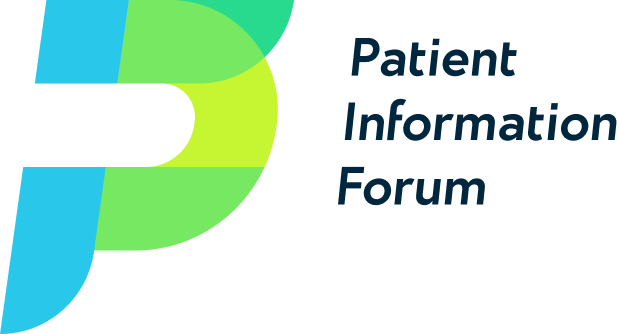Assessing the impact of COVID-19 on the clinically extremely vulnerable
A new briefing presents analysis from the Networked Data Lab (NDL) on the impact of COVID-19 on the clinically extremely vulnerable population.
The Networked Data Lab is a partnership, led by the Health Foundation, of five analytical teams embedded in local health and care systems across the UK.
Its analysis concluded the pandemic resulted in a substantial burden of severe infection and mortality among the clinically extremely vulnerable population.
The population was also 'profoundly impacted' by major reorganisation of the NHS in the early part of the pandemic.
NDL calls for action at local and national level to address the unmet need for NHS care and worsening mental health.
It says further work is also needed to understand the longer-term consequences for the clinically extremely vulnerable population both in terms of long-term healthcare needs and their ability to resume work and other daily activities.
Survey: Have your say on Core20PLUS5
NHS England and NHS Improvement is seeking views on its Core20PLUS5 approach for reducing health inequalities.
The survey, which closes on 19 November, is aimed at:
- Health Inequalities professionals working in the NHS
- Clinical and non-clinical healthcare professionals with a particular interest in reducing health inequalities
- Organisations that support or have an expert understanding of the communities at particular risk of health inequalities
NICE recommends new treatment for sickle cell disease
A new therapy for sickle cell disease is to be made available on the NHS for the first time in 20 years.
Crizanlizumab (Adakveo, Novartis) is recommended by NICE as a treatment option for preventing recurrent sickle cell crises in people aged 16 or over following the publication of draft guidance.
More than 300 people a year are expected to receive the treatment via a Managed Access Agreement (MAA), increasing to more than 450 people in subsequent years.
Study: Sources of health information among non-English-speaking women
A new study aims to examine the level of technology access and common modes of technology used by non-English speaking immigrant women.
Researchers wanted to investigate how key psychosocial determinants of health such as age, education, English proficiency, and health literacy are correlated with sources of health information and use of the internet.
The internet was the most commonly used channel to obtain health information (63%).
However, only 38.8% of the sample were very confident in using the internet.
The higher health literacy group had 56% lower odds of using the internet to acquire health information.
Survey: Information standard for social prescribing
The Professional Records Standards Body (PRSB) has created a first draft standard for social prescribing.
A survey seeking further views on the standard is now live.
It is open to social prescribers, other related professionals and social prescribing users and should take six to eight minutes to complete.
Preparing to go into hospital – tips for people with Parkinson's and their carers
In this blog for Patient Safety Learning, Laura Cockram, head of policy and campaigning at PIF member Parkinson's UK, shares tips on preparing to go into hospital.
She talks about how people with Parkinson's can prepare their medication and shares some useful resources.
A blueprint for progress on health inequalities
The Institute for Public Policy Research has published a blueprint for tackling health inequalities in England.
It says tackling health inequalities could increase life expectancy in England by two years, decrease depression prevalence and increase economic productivity.
The report identifies six areas where policy incentives are misaligned with an ambition to tackle health inequality and makes six recommendations for across the NHS and the socioeconomic drivers of poor health.
Media and Information Literacy Alliance launched
CILIP and the Information Literacy Group (ILG) have launched a Media and Information Literacy Alliance (MILA).
PIF attended a launch webinar about MILA at the end of October and was pleased to see the importance of recognising trusted information highlighted.
A MILA Framework sets out five aspirations for people living in today's connected world to be informed, healthy, empowered, socially-conscious and connected.
Joint working sees bowel cancer screening increase
Joined-up health and social care teams have improved take-up of bowel cancer screening by men in Wantage.
Social prescribers undertook extra training on patient activation and cancer screening in general, as well as bowel screening training, before contacting 50 men.
Almost half took up the screening and the team will now offer more preventative care where needed.
Staff from the primary care network, PIF member Cancer Research UK, Age UK and other stakeholders in the Buckinghamshire, Oxfordshire and Berkshire West Integrated Care System (ICS), worked together to design the system.
State of the World's Children 2021 report published
UNICEF has published The State of the World's Children 2021 On My Mind report.
It examines child, adolescent and caregiver mental health, focusing on risks and protective factors at critical moments in the life course.
The report says children and young people may feel the impact of COVID-19 for many years to come.
It calls for commitment, communication and action to promote good mental health for every child.
This includes improving mental health literacy and ensuring children and young people with lived experience have a voice.
Updated younger people vaccines toolkit
An updated vaccines toolkit for younger people has been launched by the Cabinet Office.
The toolkit includes links to assets and videos designed to encourage vaccine uptake among young people aged 18 to 29.

